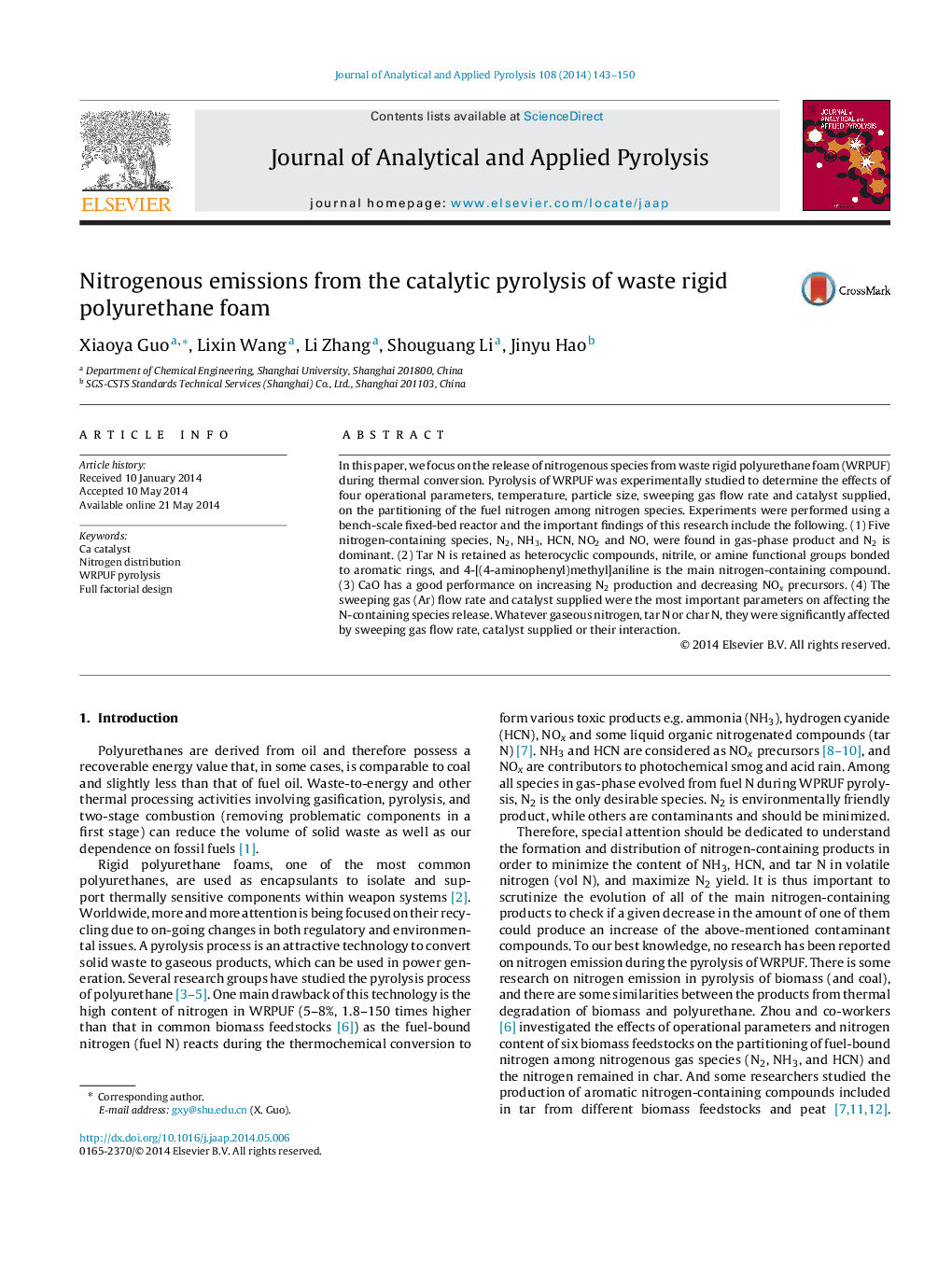| Article ID | Journal | Published Year | Pages | File Type |
|---|---|---|---|---|
| 1196670 | Journal of Analytical and Applied Pyrolysis | 2014 | 8 Pages |
•CaO has a significant performance on increasing N2 formation and decreasing NOx formation.•CaO, as catalyst, may promote the conversion of tar N to N2, and HCN to N2.•N2 is the predominant species in gas, NH3, HCN, NO and NO2 are also detected.•More than 50% tar N exists in the form of 4-[(4-aminophenyl)methyl]aniline.
In this paper, we focus on the release of nitrogenous species from waste rigid polyurethane foam (WRPUF) during thermal conversion. Pyrolysis of WRPUF was experimentally studied to determine the effects of four operational parameters, temperature, particle size, sweeping gas flow rate and catalyst supplied, on the partitioning of the fuel nitrogen among nitrogen species. Experiments were performed using a bench-scale fixed-bed reactor and the important findings of this research include the following. (1) Five nitrogen-containing species, N2, NH3, HCN, NO2 and NO, were found in gas-phase product and N2 is dominant. (2) Tar N is retained as heterocyclic compounds, nitrile, or amine functional groups bonded to aromatic rings, and 4-[(4-aminophenyl)methyl]aniline is the main nitrogen-containing compound. (3) CaO has a good performance on increasing N2 production and decreasing NOx precursors. (4) The sweeping gas (Ar) flow rate and catalyst supplied were the most important parameters on affecting the N-containing species release. Whatever gaseous nitrogen, tar N or char N, they were significantly affected by sweeping gas flow rate, catalyst supplied or their interaction.
